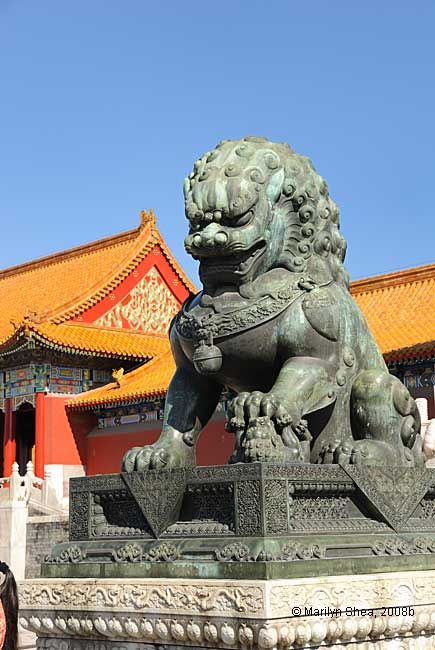 |
| Lions are often seen before government buildings and in front of private homes. They are a symbol of supreme power but were not reserved for the emperor, as were other symbols. The size and design of the lion was defined according to rank, however. The higher ranks of ministers could have lions with more ripples in the mane on top of the lion's head and they could have larger lions.
The ministers also had the standard trappings of rank and power used in business and government today: size and location of office, parking privileges, numbers of staff, and access to resources. Coal in the Forbidden City was distributed by rank. In a hierarchical society those at the top feel it is necessary to display their peacock feathers to impress and intimidate those below them in the order of power. Confucius warned that one of the signs of dysfunction in a society was when those of lower orders displayed symbols or engaged in practices reserved for their betters. He also warned that when those at the top didn't take care of the people, the government would fail. Unfortunately, ministers like lions with lots of lumps on their heads and found the temptation to acquire the trappings of power without the responsibility of good government too much to resist. Things don't change much when it comes to human behavior. A society needs to find systems that serve to check greed, excess privilege, and corruption. The Confucian system depended on the benevolent dictator to fulfill that role. The duty of the father to the son was every bit as important as the duty of the son to the father, but the ministers who had studied the classics to earn their posts learned about the privilege of rank, not the responsibilities. Confucius did not propose any independent body to act as a check. |
http://hua.umf.maine.edu/China/HistoricBeijing/Forbidden_City/index.html
Last
update: January 2010
© Marilyn Shea, 2009